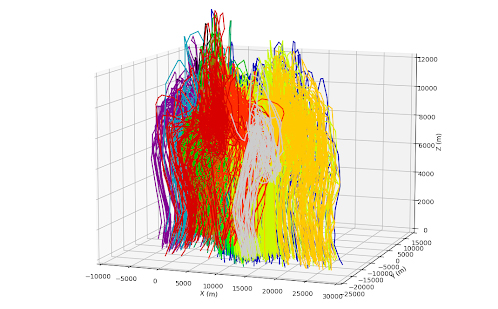Hail experts highlight progress in understanding damaging storms
Scientists brief reporters at North American hail workshop
Sep 22, 2022 - by David Hosansky
Sep 22, 2022 - by David Hosansky
Scientists are making substantial progress in better understanding hailstorms, a key step toward improving forecasts of the multibillion-dollar hazard, leading hail experts said at a briefing Thursday.
The briefing took place at the Second North American Workshop on Hail & Hailstorms, an event hosted by the National Center for Atmospheric Research (NCAR) for U.S. and international hail scientists to share updates on important advances in hail research. Hailstorms are one of the costliest types of weather disasters, causing $16 billion in damages across North America last year alone.
NCAR senior scientist Andrew Heymsfield, speaking at the briefing, emphasized the importance of using radars to better detect hail and thereby help mitigate storm-related damage. He highlighted key questions that scientists are seeking to answer, including the influence of a changing climate on hailstorms and the processes within a storm that affect the intensity and size of hail — especially why some storms will generate especially large and destructive hailstones.
“In a hailstorm, only a very few select hailstones become the largest,” he said. “What are the underlying physical processes that select these ‘favored’ hailstones?”

Becky Adams-Selin, senior scientist at Verisk Atmospheric and Environmental Research, discussed the use of machine learning techniques and advanced computer modeling to determine why it’s so difficult to forecast which storms will produce large hailstones. Her research indicates that the processes that lead to large hail may have more to do with the structure of the storm than with atmospheric conditions such as wind or temperature.
“Predicting large hailstones is difficult from a forecasting perspective because every storm is really different, and the same atmospheric environment can produce several types of storms,” she said. “We’re using machine learning to identify patterns in the tens of thousands of different hail trajectories in a storm, with the goal of identifying the conditions that generate the most damaging hailstones.”
Ian Giammanco, senior director for standards and data analytics and lead research meteorologist at the Insurance Institute for Business & Home Safety, noted that hail accounts for about 70% of the damage from severe thunderstorms, which is far more than the monetary losses caused by tornadoes or lightning. He stressed that society needs to focus on greater resilience to hailstorms, especially as more development occurs in hail prone regions.
“Our homes are getting bigger, they’re being built closer together, and our communities are more spread out, so that’s a lot of material that gets hit by hail and needs to be replaced,” he said. “We have a huge challenge ahead of us because a lot of things we have — our homes, our businesses, our cars, etc. — are not well-suited to deal with hailstorms.”
The panelists emphasized the importance of gathering more data about hailstorms. They noted that there hasn’t been a major U.S. field project to study hail in more than 40 years. Instead, scientists have to rely on scattered reports on hail that fell to the ground and try to infer general characteristics of the storm that produced them. Adams-Selin, Heymsfield, and their colleagues have proposed a new field project, ICECHIP (In-situ Collaborative Experiment for Collection of Hail in the Plains), that would use aircraft, radars, and other instruments to make detailed observations of hailstorms over the Great Plains and Front Range of the Rocky Mountains.
“We need better observations so we can understand the complex processes taking place in a hailstorm, which will lead to better forecasts,” Heymsfield said.